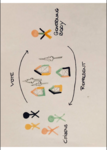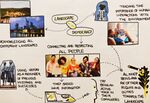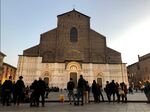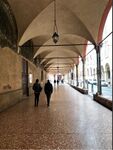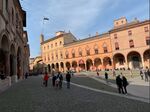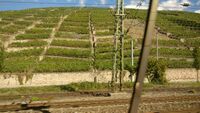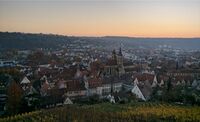LED Online Seminar 2019 - Working Group 4
--> Back to working group overview
Dear working group members. This is your group page and you will be completing the template gradually as we move through the seminar. Good luck and enjoy your collaboration!
Assignment 1 - Reading and Synthesizing Core Terminology
- You can read more details about this assignment here
- Readings are accessible via the resources page
Step 1: Your Landscape Democracy Manifestoes
- Initial manifesto yourname
Farhana's manifesto
Step 2: Define your readings
- Please add your readings selection for the terminology exercise before April 24:
A: Landscape and Democracy
Burckhardt, Lucius (1979): Why is landscape beautiful?: Fezer/Schmitz (Eds.) Rethinking Man-made Environments (2012) (Anna Fernanda Volken)
B: Concepts of Participation
Day, Christopher (2002): Consensus Design, Architectural Press (Adriana Tredici);
Hester, Randolph (2005): Whose Politics (Arati Amitraj Uttur)
C: Community and Identity
Welk Von Mossner, Alexa (2014): Cinematic Landscapes, In: Topos, No. 88, 2014. (Anna Fernanda Volken); Woodend, Lorayne (2013): A Study into the Practice of Machizukuri (Arati Amitraj Uttur)
D: Designing
Hester, Randolph (2006): Design for Ecological Democracy - Everyday Future, The MIT Press (Adriana Tredici);
Massachusetts Institute of Technology (2013): Places in the Making (Arati Amitraj Uttur)
Salgado, Mariana, et al. (2015): Designing with Immigrants (Anna Fernanda Volken)
E: Communicating a Vision
A toolkit for transforming abandoned spaces through the arts. https://issuu.com/mahatat/docs/toolkit_en._final_issuu (Adriana Tredici)
Steps 3 and 4: Concepts Selection and definition
- Each group member selects three relevant concepts derived from his/her readings and synthesize them/publish them on the wiki by May 15, 2019
- Group members reflect within their groups and define their chosen concepts into a shared definition to be posted on the wiki by June 12, 2019.
- Other group members will be able to comment on the definitions until June 30, 2019
- Each group will also report on their process to come to a set of shared definitions of key landscape democracy concepts on the wiki documentation until July 12, 2019
Concepts and definitions
Author 1:
- ......
- .......
- .......
Author 2: Arati Uttur
A Study into the Practice of Machizukuri:
• Japanese practice of community building was startd in 1960s and 70s
• Some neighbourhoods in England have adopted these practices recently
• Comparisions drawn between Japanese and English neighbourhood demographics
• Studies made in various Japanese locations
- .......
Author 3: Anna Fernanda Volken
Burckhardt, Lucius (1979): Why is landscape beautiful?:
• Which parts of our visible environment are included in that which we call landscape, and which other, equally visible phenomena are excluded?
• First scenario - the palette: Landscape is a construct - to be found not in environment, but in the minds eye of those who look - a creative act brought forth by excluding and filtering certain elements, which is influenced by our educational background. Landscape consists in different layers: the merely visual layer of colors, a more complex with hints of natural or technological infrastructures and a layer in which social aspects and hence can be identified. Second scenario - the charming place: the landscape is oriented to the ideal of the charming place created by painting/literature or tourism brochures and advertisements. This is the synonymous to filter out whatever we actually see to be able to integrate the outcome in our preconceived and idealized image of the charming place.
• Do these hypothesis stand up? They do and don't. Each person has a different charming place in mind, which means they filter different elements in order to paint their picture and the outcome is individual - because they have different pasts, impressions and memories. How far can someone distance himself from the ideal image of the landscape without destroying the message “This is a landscape”. In artistic terms, landscape appears to be a construct comprised of conventional visual structures.
Welk Von Mossner, Alexa (2014): Cinematic Landscapes, In: Topos, No. 88, 2014.
• “Even in fiction film, the authenticity of the landscape plays an active role in the filmic narrative” (...)“It is a space that is carefully constructed, not only through the selection of suitable filming locations but also through the way in which the images are framed by the camera.”
• The film is narrated by the perspective of a 6 year old girl who lives a life that is dictated by her environment and uses her lively imagination to find explanation for what she observes, calling it "the prettiest place on earth". But, at the same time, it is exposed by cameras as dangerous, ugly and decaying, as a result of complex social and ecological processes that the girl cannot comprehend. The film represent a form of slow violence – a process of delayed environmental destruction that is dispersed across time and space - both geographical and socio-economic in nature. It emphasizes the potential risks and dangers that circumscribe human inhabitation of this crisis landscape.
• However the depiction is complicated because we see Bathtub and its resilient people from the perspective of a 6 year old under extreme emotional distress. “It is a good example of a film that uses a real landscape in its narration of a fictional one in order to expose the racial, gender, and economic power dynamics that led to the emergence of the actual crisis landscape in the bayous of Louisiana.”
Salgado, Mariana, et al. (2015): Designing with Immigrants
• Immigration giver rise to global and local changes that challenge social norms and affect our lives. By involving immigrants in design processes, we emphasize designers’ responsibility for social inclusion. Design researchers often tackle issues of social responsibility ineffectively, but with the contribution could be more socially relevant with the necessary support. Issues of immigration are in increasingly important part of the political agenda and of the changing landscapes of cities.
• The way the meetings were staged were more important than the tools and techniques and working with people from different cultural background is not straightforward – the atmosphere created influence in the results. Not only including people from different background is important, but also by talking other parameters such as age, gender, educational level, language skill and social status. Non-language communication is key because they are using their mother tongue language and also because of the emotional nature of the issue of immigration.
• If we consider design a question of problem-defining rather than problem-solving, including immigrants in participatory design processes is key to transformative actions capable of producing social change. Paying attention to trust, empathy, personal and professional relationships and ethics are key to enriching design visions an recognizing design as a social practice.
Author 4: ...
- ......
- .......
- .......
Step 5: Reflection
Step 6: Revised manifestoes
- please look again at your initial manifestoes and update them with any new aspects/prespectives you have taken up during this seminar
Assignment 2 - Your Landscape Symbols
- You can read more details about this assignment here
Landscape Symbols Author 1: Arati Uttur
Highway Dynamics: The highway is one such infrastructure element that faces some of the most raw and harsh natural elements and are constructed to withstand tests of time. Highways help us connect. They carry us across boundaries. They provide experiences.Bangalore 12.9716° N, 77.5946° E . Belgaum 15.8497° N, 74.4977° E. Ladakh 34.847°N 76.827°E.
Water:Water is symbolic to humans primarily in terms of existence.Due to this basic need, Water then becomes an integral part of cultural activities, focal point of urban developments, a contributing element for climate control etc.We also connect with water spiritually and seek refuge in its calmness. We also seek refuge from its power.12.9716° N, 77.5946° E
Sunrise and Sunset:The sun has utmost importance in many aspects of symbolism. Right from early civilisations and religious connections to modern day solar energy.However, the phenomenon of the sunrise and sunset hold a special place in landscape symbolism . They signify time and also dimensions in time. Symbolic to the beginning and the end. 26.9157° N, 70.9083° E
Landscape Symbols Author 2: Adriana Tredici
The Basilica San Petronio in Bologna was built in the year 1388 and got his effectiveness from january 1389. It is located in the very center of Bologna, with its main facade, unfinished, facing the Piazza Maggiore. Dedicated to the holy San Petronio (Bishop between 431 to 450) as a thanking for recovered freedom of the city. For this reason, the church was built since the beginning not as Cathedral, but as a civic and votive temple. As an opportunity for the people to show their devotion to the city it has been also the forum for demonstrations of public religiosity and citizens´spirit. It is the architectural expression of a new beginning of the city history and also and expression of identity of the city and its citizens. 44°29'36.5”N 11°20'35.6”E
As a result of a high urban migration and arrival of students the porticos in Bologna where built to extend the inner living space. At a certain point the streets where so crowded of porticos that they became a public space. Now this public space, built from a functional point of few is now an important space of human interaction with also a lot of cafés, bars, restaurants and shops. Protecting also from rain and sun. 44°29'37.6”N 11°20'26.9”E
This Piazza, Piazza Santo Stefano, is just one example of many more here in Bologna. First special thing about those places is the fact that in this old, dense city there is just a free, shaded spot surrounded of buildings. Built freedom. Public spaces, without the need of paying entrance where people can interact and their freedom to do whatever the want to: sing, dance, enjoy markets, chilling in the sun etc. 44°29'32.1”N 11°20'53.6”E
Landscape Symbols Author 3: Anna Fernanda Volken
Picture 1: 48°44’32.85”N 9°18’27.80”E I chose the old Rathaus because, first of all, it is an imposing building in the historical city center of Esslingen - which contains some of the oldest constructions in Germany. That is possible thanks to fact that the city suffered no significant destruction during the Second World War - so it can be seen as an "architecture resistence symbol" through times of bombs and suffering. I see it also as an expression of a local identity. The Old Rathaus was built around 1420 and it has an eagle on its top, the animal that symbolizes freedom. On the occasion of a renovation, in 1926, there were expressive donations by the citizens - showing the importance of the building to local people.
Picture 2: 48°44’35.51”N 9°17’38.76”E The vineyards offer interesting views over the trajectory of the train to/from Stuttgart and awaken a desire to try the local wines. Besides that, this landscape provides the basis for recreational opportunities, like the Vineyard Walk, when people really interact with the landscape.
Picture 3: 48°44’43.19”N 9°18’35.38”E Esslingen Castle is a preserved part of the medieval city fortification, which is located above the former and present-day city center. I chose the beautiful view it offers and it is important to say that the entrance is free, which invites not only visitors but residents to just enjoy a nice walk.
- Symbol yourname photovoice1
add a caption (one paragraph max) description of the symbolism, interpretation, as well as geo-location
- Symbol yourname photovoice2
add a caption (one paragraph max) description of the symbolism, interpretation, as well as geo-location
- Symbol yourname photovoice3
add a caption (one paragraph max) description of the symbolism, interpretation, as well as geo-location
[[Media:File:Example.ogg]]=== Landscape Symbols Author 4: ... ===
- Https://ledwiki.hfwu.de/index.php?title=File:Landscape Symbols - Highway.jpg yourname photovoice1
add a caption (one paragraph max) description of the symbolism, interpretation, as well as geo-location
- Symbol yourname photovoice2
add a caption (one paragraph max) description of the symbolism, interpretation, as well as geo-location
- Symbol yourname photovoice3
add a caption (one paragraph max) description of the symbolism, interpretation, as well as geo-location
Assignment 3 - Role Play on Landscape Democracy "movers and shakers"
Jon Jandai : Co-founder of Pun Pun Center for Self-reliance in Thailand (Arati Uttur)
- You can read more details about this assignment here
Assignment 4 - Your Landscape Democracy Challenge
- You can read more details about this assignment here
- Each group member will specify a landscape democracy challenge in his/her environment
Landscape Democracy Challenge 1
- Give a title to your challenge
- Yourname challenge 1.jpg
caption: why did you select this case?
- Yourname challenge 2.jpg
caption: what is the issue/conflict (1)
- Yourname challenge 3.jpg
caption: what is the issue/conflict (2)
- Yourname challenge 4.jpg
caption: who are the actors?
Your references:
- ...
- ...
Landscape Democracy Challenge 2
- Give a title to your challenge
- Yourname challenge 1.jpg
caption: why did you select this case?
- Yourname challenge 2.jpg
caption: what is the issue/conflict (1)
- Yourname challenge 3.jpg
caption: what is the issue/conflict (2)
- Yourname challenge 4.jpg
caption: who are the actors?
Your references:
- ...
- ...
Landscape Democracy Challenge 3
- Give a title to your challenge
- Yourname challenge 1.jpg
caption: why did you select this case?
- Yourname challenge 2.jpg
caption: what is the issue/conflict (1)
- Yourname challenge 3.jpg
caption: what is the issue/conflict (2)
- Yourname challenge 4.jpg
caption: who are the actors?
Your references:
- ...
- ...
Landscape Democracy Challenge 4
- Give a title to your challenge
- Yourname challenge 1.jpg
caption: why did you select this case?
- Yourname challenge 2.jpg
caption: what is the issue/conflict (1)
- Yourname challenge 3.jpg
caption: what is the issue/conflict (2)
- Yourname challenge 4.jpg
caption: who are the actors?
Your references:
- ...
- ...
Your Democratic Change Process
- Add Title
- Your Democratic Change Process Slide1.jpg
caption: ...
- Your Democratic Change Process Slide2.jpg
caption: ...
- Your Democratic Change Process Slide3.jpg
caption: ...
- Your Democratic Change Process Slide4.jpg
caption: ...
Reflection
- ....
- ....
- ....
Conclusion:
- ....
- ....
- ....
Your references
- ...
- ...
- ...

